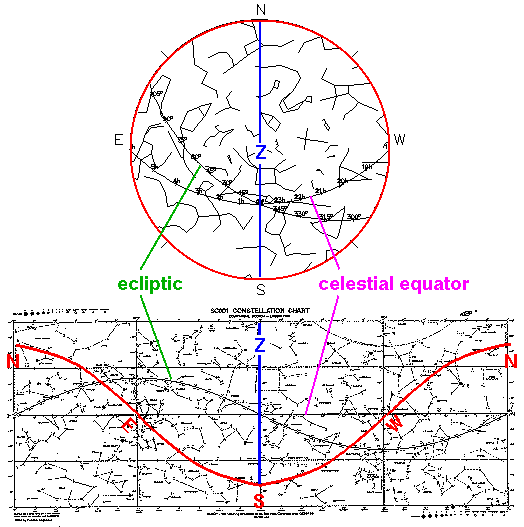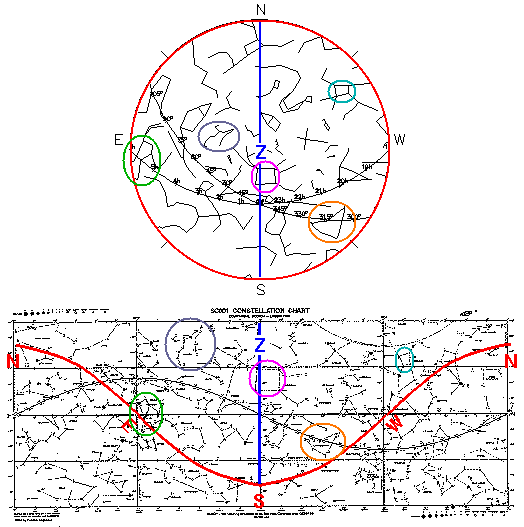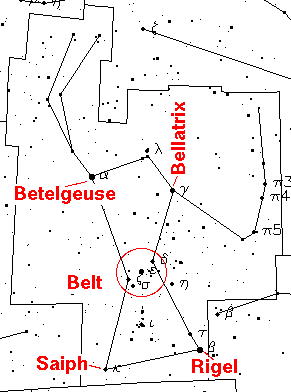
Below find a sky map for CSB/SJU on November 20 at about 8 pm and an SC001. On the sky map the location of the horizon is obvious: it's the red circle that surrounds the stars. On the SC001 the horizon has no fixed location, but I've drawn it in as it would be on November 20 at about 8 pm: it is the smooth up-and-down red curve with labels for the cardinal directions NESW. The meridian is the blue line that runs through zenith (labeled with a Z) and the north and south points of the horizon. The region around the NCP is of course absent on the SC001 (that's what the SC002 is for).

On the SC001 the celestial equator is the horizontal line that runs right through the center of the chart. See that it hits the east and west points on the horizon. Of course, the celestial equator also hits the east and west horizon points on the sky map, but on the sky map the celestial equator looks like a drooping line rather than a great circle. Its hard to read the RA marks on these charts, but at this time RA=0h is on the meridian, and the RA values listed on the celestial equator increase as you move to your left (i.e., toward E). RA=6h is exactly on the eastern horizon.
The ecliptic is also a great circle, but instead of looking straight it looks distorted on both maps. The vernal equinox (where the ecliptic and celestial equator intersect) is on the meridian.

I've marked various constellations on both the SC001 and the sky map. The "Great Square" of Pegasus, circled in purple, is near the meridian. The "Big Smile" of Capricornus, circled in orange, is in the SW. The "Keystone" of Hercules, circled in cyan, is in the NW. Notice that using the sky map (rotating the sky map until the horizon below Hercules is down) you can see that the actual keystone in the sky will look rotated clockwise compare to one sitting at the top of a real stone arch. To the east of the meridian find Perseus circled in gray. In green Orion is rising in the east. Of the main "hour glass" stars of Orion only Saiph has yet to rise.
